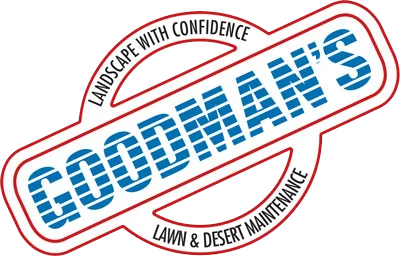In the Phoenix area, landscape drainage and erosion control are often overlooked until the monsoon rains arrive. Despite being in a desert climate, homes across the Valley experience water-related issues due to the unique combination of compacted soil, sloped terrain, and short but intense seasonal storms. If you’ve noticed standing water in your yard, washed-out gravel, or signs of soil erosion near your foundation, it may be time to take action.
Even though Phoenix averages only a few inches of rain annually, most of that rainfall comes during short, heavy bursts between June and September. The clay-heavy soil common in many Phoenix neighborhoods does not absorb water easily, which leads to surface runoff, pooling, and, in many cases, erosion. For homeowners, this can mean damage to plants, patios, and even a home’s foundation if proper drainage systems are not in place.
One of the most practical and effective drainage solutions is the installation of French drains. These consist of a gravel-filled trench containing a perforated pipe that collects and redirects water away from problem areas. They are particularly useful around the perimeter of a home, patios, or retaining walls. Another popular option, both for functionality and aesthetics, is the dry creek bed. Designed to imitate a natural stream, these shallow rock-lined trenches help guide stormwater across a property in a controlled and visually appealing manner.
Regrading the property is another essential aspect of effective drainage. In many older homes or improperly landscaped yards, water naturally flows toward the home instead of away from it. By carefully adjusting the slope of the yard, professionals can ensure that rainwater moves safely and efficiently off the property. In areas with high foot traffic or hard surfaces, catch basins and channel drains can be installed to collect rainwater and divert it underground, away from driveways or foundations.
For homeowners looking for more environmentally friendly solutions, permeable pavers are an excellent choice. These allow water to seep through the surface and into the ground below, which helps reduce runoff and control erosion. Unlike traditional concrete, these surfaces help manage water naturally and effectively.
In Phoenix, erosion control also involves managing dry, dusty soil that is vulnerable to wind and water displacement. Decomposed granite is a widely used material that helps stabilize soil while maintaining a natural desert aesthetic. Local ground covers such as trailing lantana or other drought-tolerant plants can also help prevent erosion, especially on sloped lots. Where terrain is more dramatic, retaining walls not only prevent soil movement but also create opportunities for tiered landscaping that improves property value and curb appeal.
The signs of drainage or erosion problems include water pooling more than a day after rainfall, visible roots or shifting soil, mildew near the home’s foundation, and even small sinkholes or softened patches in the yard. Often, these symptoms indicate underlying drainage issues that can worsen over time if left unaddressed.
While some minor improvements, such as extending downspouts or applying gravel, can be done by a handy homeowner, significant drainage and erosion problems are best handled by professionals. A drainage expert or landscape contractor familiar with the Phoenix climate can evaluate the unique conditions of your yard and recommend long-term, cost-effective solutions tailored to your property.
Landscape drainage is not just about avoiding muddy shoes or keeping your garden tidy. It plays a critical role in protecting your home’s foundation, preserving your landscaping investment, and maintaining a safe, attractive outdoor space year-round. In a city like Phoenix, where weather extremes are common, taking a proactive approach to drainage and erosion control is one of the smartest things a homeowner can do.
If you’re unsure whether your property is properly protected, our team at Goodmans Landscape is here to help. We offer professional assessments and can design a drainage plan that suits your budget, soil type, and long-term needs. Contact us today to schedule a consultation and stay one step ahead of the storm.
Landscape Drainage & Erosion Control FAQ
- Why is drainage important for landscaping in Phoenix if it’s mostly desert?
Although Phoenix has a dry climate, the area experiences sudden and intense monsoon rains during summer. The compacted desert soil doesn’t absorb water well, which leads to runoff, pooling, and erosion. Without proper drainage, even one heavy rainstorm can cause damage to your landscape and foundation. - What are the most effective drainage solutions for Arizona homes?
Popular drainage solutions in Phoenix include French drains, dry creek beds, catch basins, and regrading the property. Each addresses a different issue, from surface water pooling to redirecting stormwater away from structures. The best solution depends on your property’s layout and soil conditions. - How can I tell if my yard has poor drainage?
Common signs include standing water that lingers for more than 24 hours after a rainstorm, soggy patches of lawn, exposed roots, shifting soil, mildew on walls, or erosion around your home’s foundation. You may also notice that gravel or mulch washes away easily. - Is erosion a problem in Phoenix yards?
Yes. Despite low rainfall, the Valley’s combination of high winds, sloped terrain, and sudden rains can quickly strip away topsoil. Erosion can ruin your landscaping, create uneven ground, and even damage structural elements over time. - Are dry creek beds just decorative or do they actually work?
Dry creek beds are both functional and aesthetic. While they mimic natural streambeds, they’re carefully designed to channel and slow rainwater across a property. When installed correctly, they prevent runoff and enhance curb appeal at the same time. - Can landscaping alone solve drainage problems?
In many cases, yes. Strategic grading, the use of gravel or decomposed granite, and drought-resistant ground cover plants can all help manage water flow. For more serious issues, drainage hardware like French drains or underground piping may be necessary. - What are permeable pavers and how do they help?
Permeable pavers are specialized pavers that allow water to seep through the surface into the ground below. They reduce runoff, minimize erosion, and help keep areas like driveways and patios from flooding. They’re ideal for sustainability-focused landscapes in Phoenix. - How much does it cost to install a drainage system in Phoenix?
The cost can vary widely depending on the scope. Basic solutions like grading or small gravel beds may cost a few hundred dollars. More involved systems like French drains or full-property regrading can range from $1,000 to $5,000 or more. A proper inspection is necessary to provide an accurate estimate. - Can I DIY my drainage or should I call a professional?
Minor fixes like gutter extensions or adding gravel can be done by handy homeowners. However, drainage design is complex and mistakes can lead to bigger problems. For anything near your foundation or involving excavation, it’s best to consult a professional with experience in Arizona’s climate. - Do you offer free drainage assessments?
Yes, our team at Goodman’s Landscape offers drainage and erosion control consultations for homeowners in Phoenix and surrounding areas. We’ll assess your property and help design a long-term, cost-effective solution that fits your landscape and budget.



